
Some information about Ansel Adams

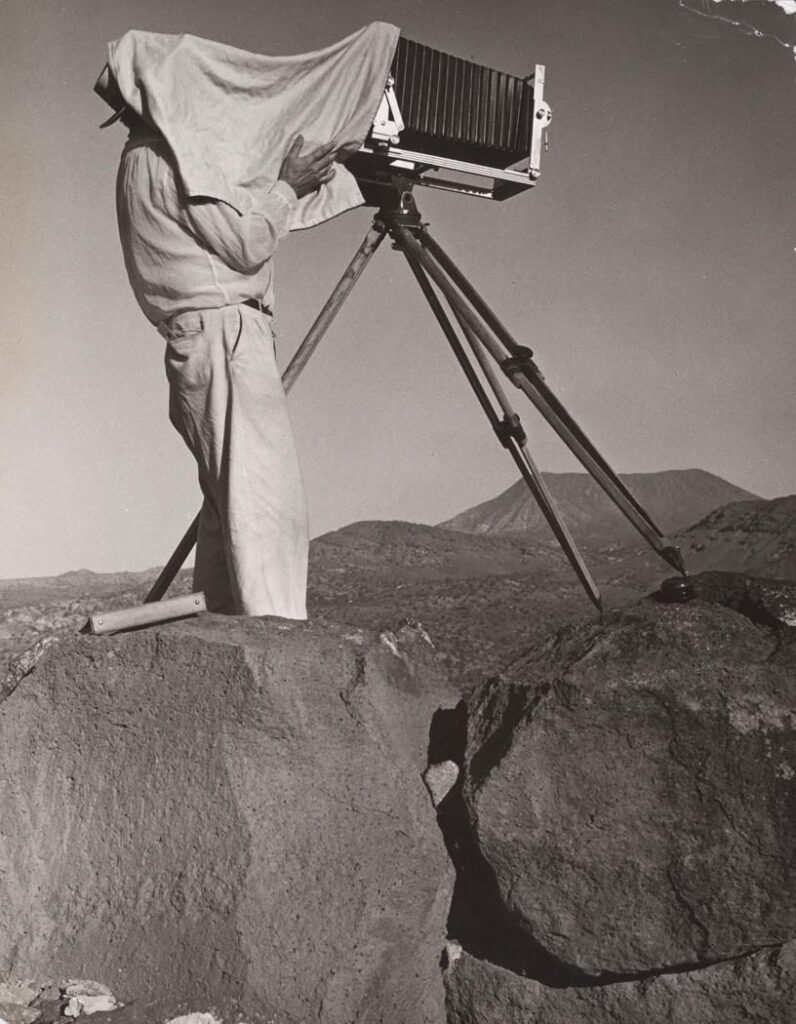
Early Childhood
Ansel Adams was born in San Francisco in 1902, shortly before the ‘Great Quake’ in 1906. As a result of an aftershock of the Great Quake, Ansel was slammed to the floor and he suffered from a broken nose, leaving his face disfigured. When Adams was in school he was very introverted and conscious of his nose, which he never got fixed, so he didn’t fit in very well at school, resulting of him moving schools a lot. After moving around various schools, his Father decided that it was best for Ansel to get home-schooled. During this time, Adams would find comfort in going on long walks to the forest and dunes of the Golden Gate, which was near his house. When Adams was 12, he taught himself to play and read music on the piano, which he really enjoyed, however, after years of lessons, he realised he wasn’t cut out to be a professional. When Adams was 14, he was gifted a Kodak Brownie Box Camera by his parents and was taken on a trip to the Yosemite National Park, where he later met his Wife and would frequently visit up until his death in 1984.
Professional Career
In 1919, Ansel Adams joined the Sierra Club, an organisation which worked to protect the environment by creating national parks. In 1927, Adams was officially named the Sierra Club’s trip photographer and he published his first photos on the Sierra Club Bulletin. Adam’s reputation as a photographer and environmentalist grew over the next few years and he became more politically involved with the Club’s Environmental Activities such as the fight to create King’s Canyon National Park. In 1934, Adams was elected as a member of the Board of Directors for this club and maintained the role for 37 years. In 1936, Ansel used his portfolios as a way to try and convince the members of congress to transform the area into a park, however, this proposal failed. This failure did not stop Adam’s fight for the park so in 1938 he published a book with his photos of the King’s Canyon National Park which then gained the attention of many people, including President Roosevelt. Finally, in 1940 the King’s Canyon National Park was created and Adams became known for being both an artist and defender of Yosemite and the environment. Ansel Adams went on to gain multiple Presidential rewards, including the Presidential Medal of Freedom in 1980, and he was (and still is) admired for preserving nature in both his photos and in real life.


Ansel Adams and the Half Dome
Monolith, the face of Half Dome, 1927


This is the photo which Ansel Adams took in 1927 that ultimately changed his career. Adams started the journey to take this photo on the morning of April 10th, alongside his Fiancé and 3 of his close friends. During this journey, the group had to climb to mountain with all their gear to get to the diving board, a platform where they could view the face of the dome. At the time this photo was taken, out of the frame there was the sun which was highlighting the face of the dome, creating contrast between the black sky, grey dome and white snow. The photo on the right shows the result from the use of a yellow filter, which Adams didn’t believe fit his vision so he swapped it to a dark red filter, which can be seen on the left as his final image. Furthermore, Ansel used visualisation to take this image by imagining what he would like the image to look like in his head before actually taking it.
Some more photographs by Ansel Adams

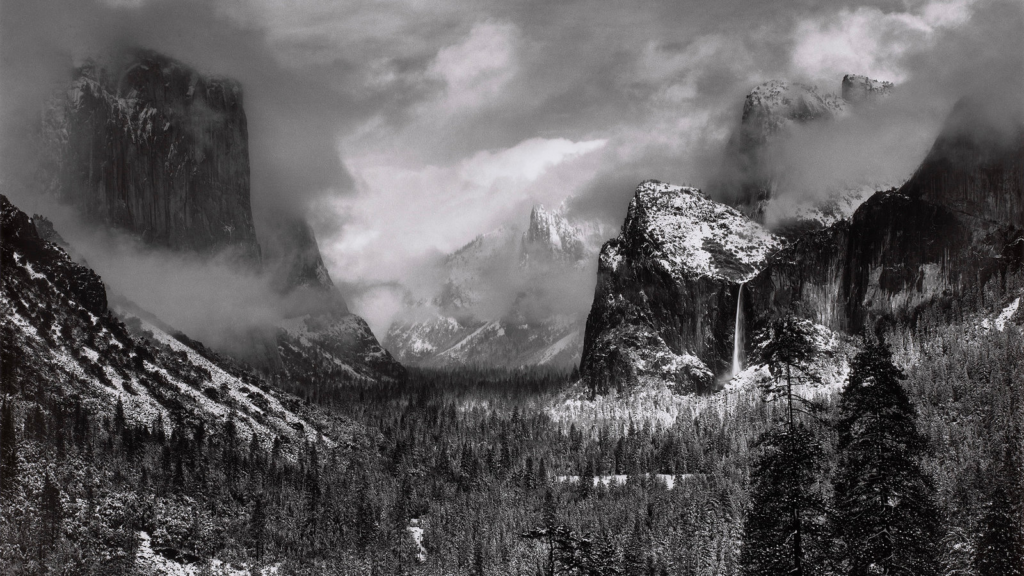


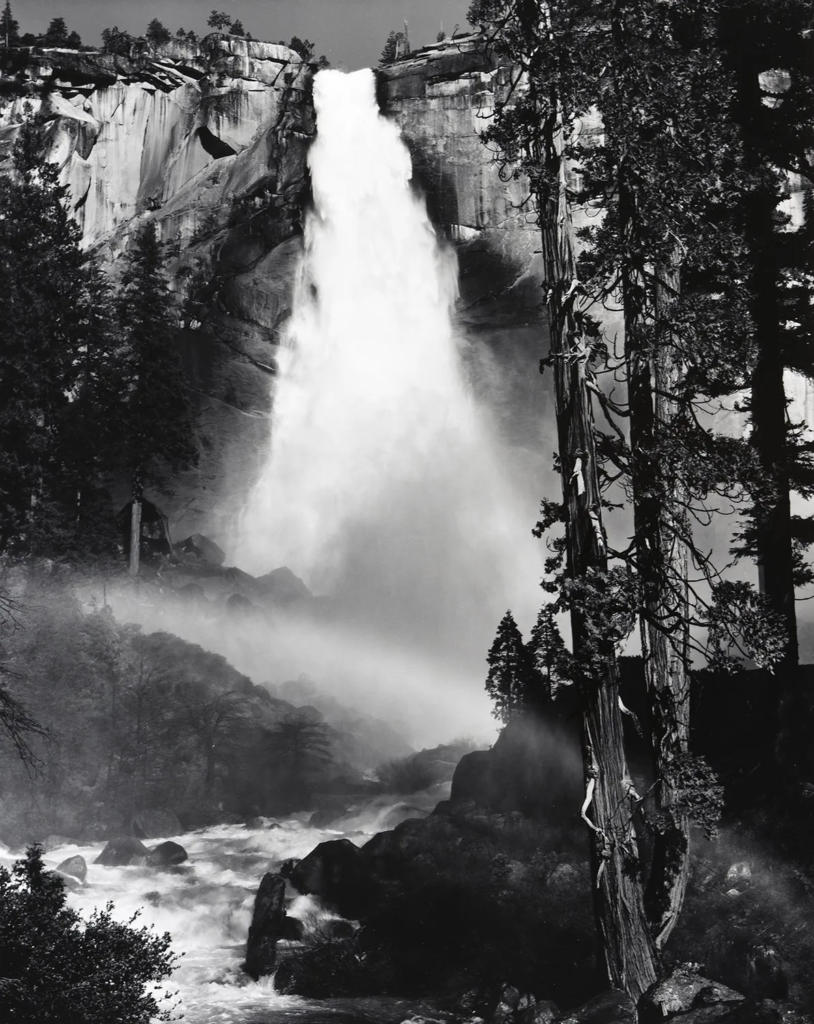

As you can see, Ansel Adams enjoyed taking photos of mountains, especially within Yosemite National Park, and water courses. Although Adams took many photographs within his lifetime, these were some of my favourites as I think that they are a good representation of his capabilities and style.
Colour zonal system

The colour zonal system is a system which was used thoroughly by Ansel Adams that ranges from 0 to 10 in roman numerals. Each number represents a tonal value from black to white, with grey tones in the middle. This system is the exposure meter on a modern camera and each zone represents an f-stop which is used to change the aperture. In addition, Adams used this system to control the contrast in his images so that they display both highlights and shadows.

This is a very well known photograph by Ansel Adams. As you can see, it clearly displays tones ranging from 0 to 10 in the colour zonal system. For example, the colours in the river range from 8 to 10 and the bottom left corner is clearly 0. Also, the snow on the mountains is 10 but the mountains that it is upon appear to vary between all tones.
Ansel Adams and Group f/64
On the 15th of November 1932 at the M.H Young Memorial Museum in San Francisco, Ansel Adams, along with 10 other photographers, announced themselves as Group f/64. This was a group of photographers with the same style of sharply detailed, purist photography, such Ansel Adams, Edward Weston, his son Brett Weston, Willard Van Dyke and more. This group was created against pictorialism and, instead, promoting realism in photography.
Ansel Adams and Edward Weston
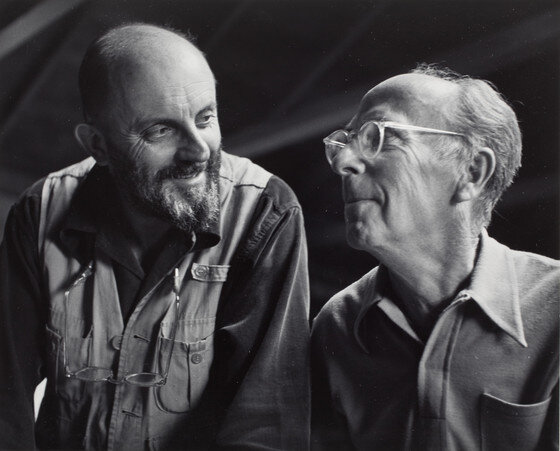
Edward Weston was an American Photographer, born in Illinois in 1886, who was best known for his detailed images of natural forms, landscapes and nudes. Weston received his first camera at the age of 16 as a gift from his father then studied at the Illinois College of Photography. In 1911, Edward Weston moved to California to pursue his Photography career after falling in love with it when visiting his sister.
Edward Weston and Ansel Adams became great friends through their careers and Group f/64 and they were two of the most influential photographers of the 20th century. Whilst Ansel Adams liked to focus on depictions of mountains and clouds, Edward Weston would focus mostly on close ups of natural objects such as fruits and vegetables. On the other hand, Weston also depicted many landscapes, mostly of sand dunes, capturing their finer details. Although their work differed in some ways they were also very similar in terms of displaying high contrast and detail. Each of their work also displayed themes of Romanticism as they displayed the natural beauty of the world and things within it that have not been impacted by humans.
Photographs by Edward Weston:
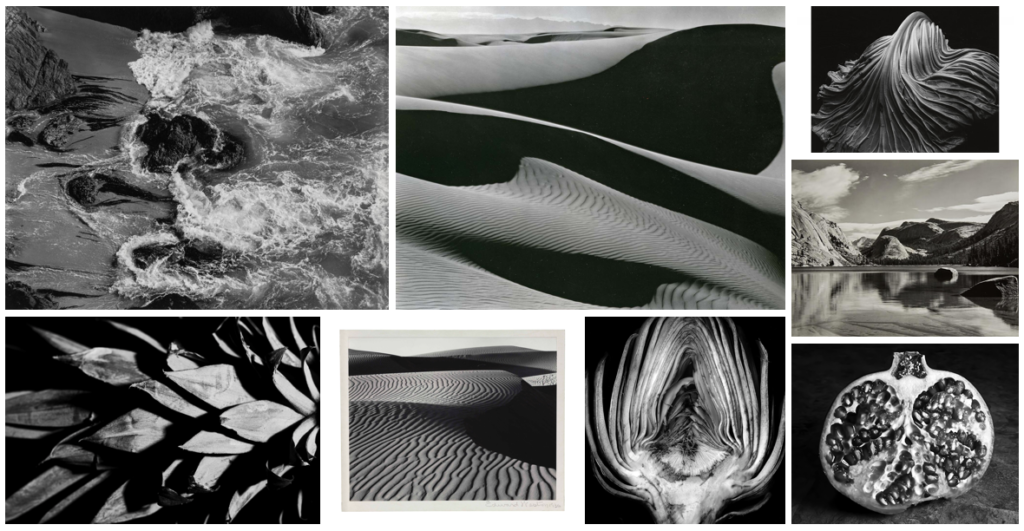
Quotes
‘You don’t take a photograph, you make it.‘ – Ansel Adams
This is one of the most well-known quotes from Ansel Adams where he is referring to the fact that taking photographs is much more than just the click of a button and, instead, it is what you make it by visualisation and hard work.
‘We don’t make a photograph just with a camera, we bring to the act of photography all the books we have read, the movies we have seen, the music we have heard, the people we have loved.’ – Ansel Adams
Similarly to the previous quote, here, Adams explains that there is more to photography than just taking a photo on a camera which is what motivates us to take the image and the story behind it.
‘Good composition is merely the strongest way of seeing.’ – Edward Weston
This quote describes what the art of photographic composition really is and describes that it is one of the key points to success when taking a photograph, rather than the subject matter. For example, if you were to get a professional photographer and a child to take a photograph of the same subject, it is most likely that the professional photographer will have a more successful outcome as they have more knowledge of composition.
